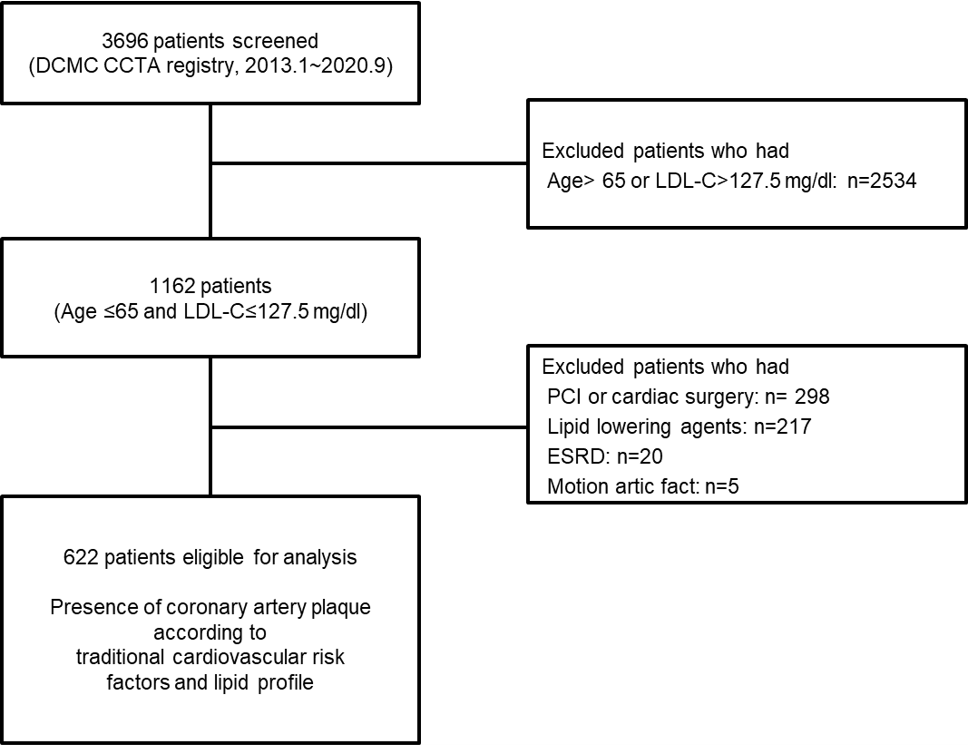Lots of interesting abstracts and cases were submitted for TCTAP 2022. Below are the accepted ones after a thorough review by our official reviewers. Don’t miss the opportunity to expand your knowledge and interact with authors as well as virtual participants by sharing your opinion in the comment section!
TCTAP A-060
The LDL-C/Apo B Ratio Predicts Coronary Artery Disease in Patients Younger Than 65 Years With Low LDL-C
By Hae Won Jung, Seung Pyo Hong, Jin Bae Lee
Presenter
Haewon Jung
Authors
Hae Won Jung1, Seung Pyo Hong2, Jin Bae Lee2
Affiliation
Daegu catholic medical center, Korea (Republic of)1, Daegu Catholic University Medical Center, Korea (Republic of)2
View Study Report
TCTAP A-060
Imaging: Non-Invasive
The LDL-C/Apo B Ratio Predicts Coronary Artery Disease in Patients Younger Than 65 Years With Low LDL-C
Hae Won Jung1, Seung Pyo Hong2, Jin Bae Lee2
Daegu catholic medical center, Korea (Republic of)1, Daegu Catholic University Medical Center, Korea (Republic of)2
Background
High low-density lipoprotein cholesterol (LDL-C) levels and old age are major risk factors for coronary artery disease. However, the risk factors for coronary artery disease in relatively young patients with low LDL-C levels have not been elucidated. Therefore, we performed this study to evaluate the risk factors of coronary artery disease, including traditional cardiovascular risk factors and lipid profiles, in patients younger than 65 years with low LDL cholesterol (LDL-C<127.5 mg/dL).
Methods
This study included 622 statin naive patients <65years with low LDL cholesterol levels who underwent coronary computed tomographic angiography due to chest discomfort. We performed multivariate logistic regression analysis to evaluate the risk factors of atherosclerosis, defined as the presence of any coronary plaque. In addition to traditional cardiovascular risk factors, the covariate also included lipid profiles (LDL-C,high-density lipoprotein cholesterol, triglyceride, apolipoprotein B (ApoB)/apolipoprotein A1 (Apo A1) ratio, LDL-C/Apo B ratio, and lipoprotein (a) (Lp(a)).


Results
The mean age of the 622 patients was 54.4years and the mean LDL-C level of 622 patients was 91.0 mg/dL. Of the total 622patients, 63.2% were male and 23.2% had diabetes. Multivariate regression analysis showed that age (odds ratio [OR]: 1.108; 95% confidence interval [CI]: 1.076–1.140),male sex (OR: 3.912; 95% CI: 2.443–6.264), diabetes mellitus (OR: 2.354; 95%CI: 1.369–4.048), and hypertension (OR: 2.260; 95% CI: 1.446–3.532) were associated with atherosclerosis. A high LDL-C/Apo B ratio was a negative predictor of atherosclerosis (OR: 0.277; 95% CI: 0.077–0.994) (all p <0.05).
Conclusion
A low LDL-C/Apo B ratio is associated with the development of coronary atherosclerosis in patients <65 years with low LDL-C levels.


